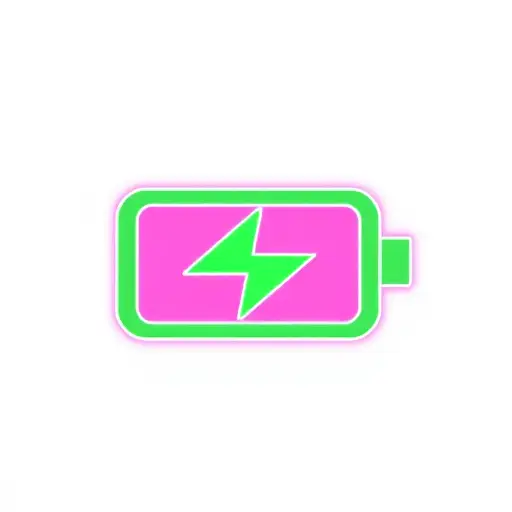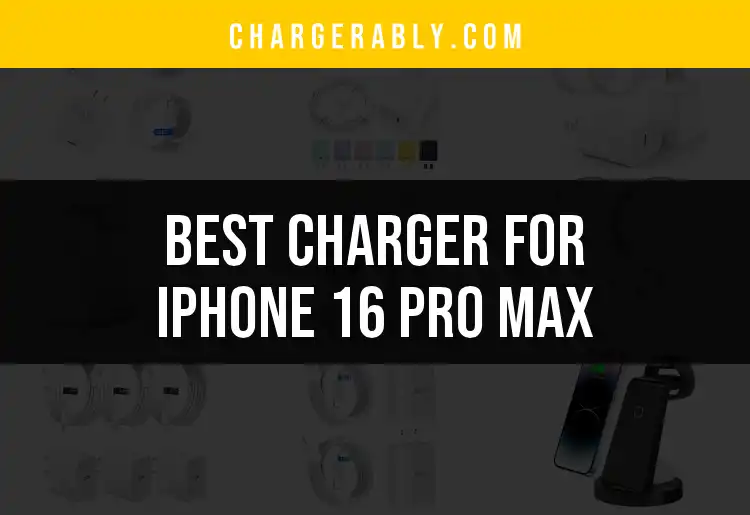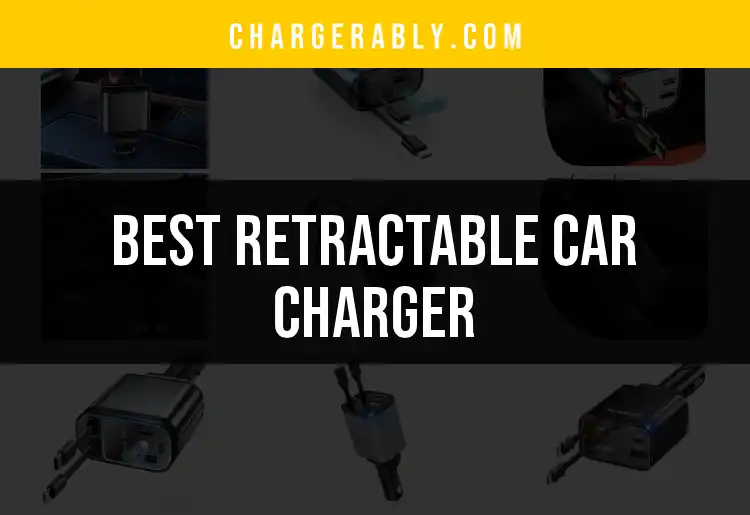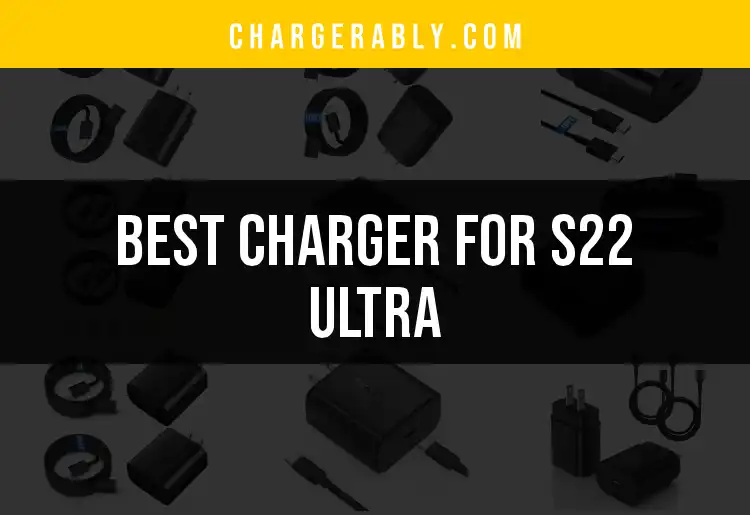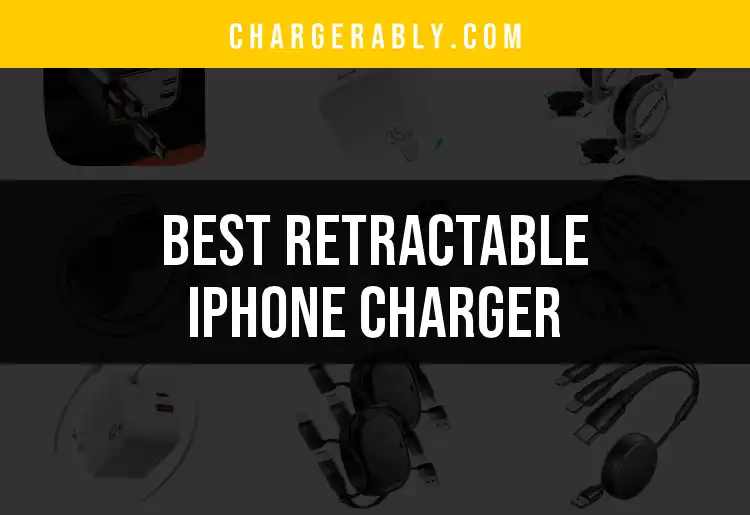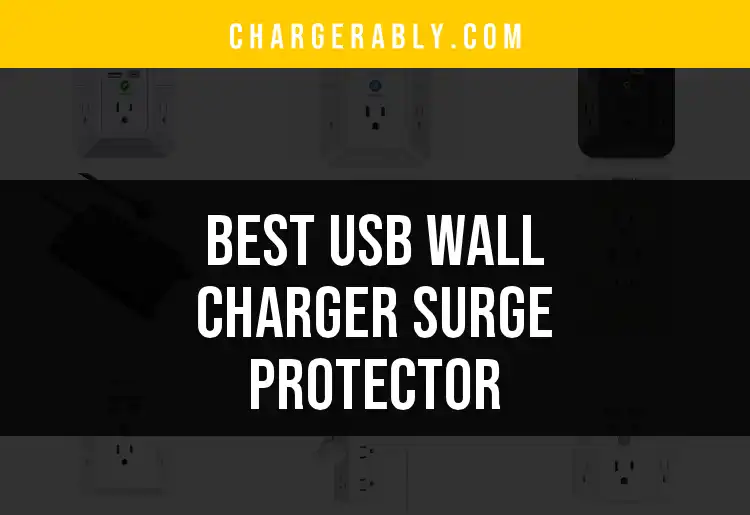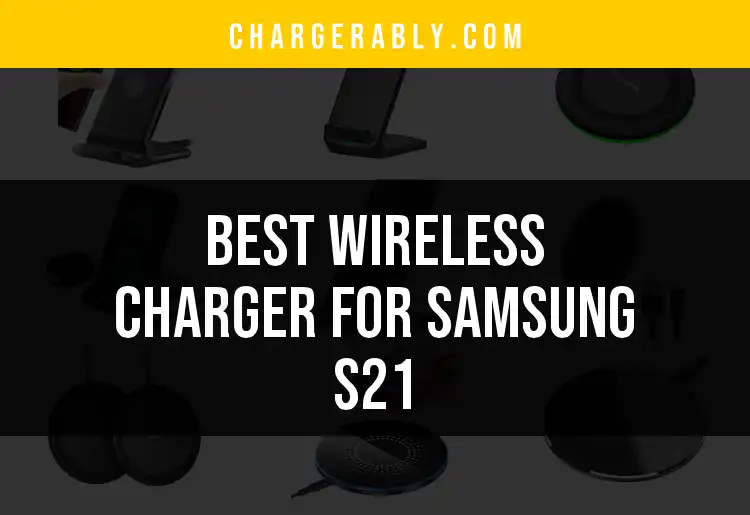Chargers are essential electrical devices that convert power from an outlet into a suitable form for various electronic devices, ranging from smartphones to laptops and tablets. The importance of chargers cannot be overstated; they ensure that our devices remain operational, allowing us to stay connected, productive, and entertained in an increasingly digital world.
As technology advances rapidly and devices become more sophisticated, understanding the different types of chargers available becomes crucial. The right charger not only ensures that your devices charge efficiently but also helps maintain battery health over time, ultimately extending the life of your gadgets.
Understanding Charger Technology
Basic Electrical Principles Behind Chargers
Understanding how chargers work at a fundamental level is vital for anyone looking to buy or use them. Chargers operate based on three key electrical principles: voltage, amperage, and wattage. Voltage refers to the electrical force that pushes electric current through a circuit, while amperage measures the flow of electrons. Wattage, a combination of voltage and amperage, indicates how much power a charger can deliver to a device.
By familiarizing yourself with these terms, you can make better purchasing decisions based on the power requirements of your specific devices. For example, a charger that provides 5 volts and 2 amps delivers 10 watts of power, which is typically sufficient for many smartphones and smaller devices but may not be enough for power-hungry gadgets like laptops.
Battery Chemistry and Charging Protocols
Battery technology is ever-evolving, with various types of batteries designed to meet specific needs. For instance, lithium-ion batteries—commonly found in portable electronics—have unique charging requirements dictated by their chemistry. Recognizing the nuances in battery types is crucial for ensuring safe and efficient charging.
Most devices support specific charging protocols, such as Qualcomm's Quick Charge or USB Power Delivery (USB PD). These protocols enable smarter communication between the charger and the device, allowing for expedited charging while minimizing heat buildup. A charger that supports fast charging protocols can significantly reduce downtime for users who are constantly on the move.
Smart Chargers: How They Work
Smart chargers bring a level of intelligence to charging that can help safeguard both your charger and your device. They feature built-in microprocessors that can detect the type of battery they are charging. By intelligently adjusting the voltage and current output to match the needs of the battery, smart chargers ensure not only optimal charging speeds but also enhance overall safety.
The importance of smart chargers lies in their ability to monitor charging conditions actively. For example, they can switch the power off when the battery is fully charged to prevent overcharging, which can lead to battery damage. In a world where we are continually looking for convenience and efficiency, smart chargers fit precisely into that niche.
Fast Charging vs. Slow Charging
The variety of charging speeds available today has given users more choices than ever, but it can also lead to confusion. Fast charging can significantly expedite the time it takes to recharge your device, which is invaluable during times of urgency. However, it's important to consider the long-term impact on battery life.
While fast charging delivers power quickly, it generates additional heat, which, over time, can degrade battery health. On the other hand, slow charging is gentler and can contribute to better battery longevity. Understanding these trade-offs helps you make informed decisions regarding how and when to charge your devices, fitting your lifestyle and usage patterns.
Safety Features in Chargers
Safety is paramount when it comes to charging devices, given the risks associated with battery malfunctions, such as overheating and fires. Modern chargers come equipped with a variety of safety features designed to mitigate these risks. For instance, many chargers include overcharge protection, which prevents power delivery once the device reaches full capacity, as well as thermal protection that automatically shuts down the charger if it becomes too hot.
These safety features not only protect the longevity of your devices but also provide peace of mind, knowing that you can safely charge overnight or while you're away. Understanding the importance of these safety mechanisms can guide you to choose chargers that provide robust protection, minimizing risks associated with battery charging.
Types of Chargers
Wall Chargers
Wall chargers are typically the most recognized type of charger and are designed to convert AC power from a wall outlet into DC power suitable for devices. These chargers are broadly categorized based on their output wattage, designed to meet the power needs of various gadgets. Most smartphones come with their designated wall chargers to ensure optimal performance.
Being aware of the wattage and compatibility of wall chargers can make a significant difference in charging efficiency. For instance, a charger that matches your device’s power requirements will ensure quicker and safer charging, whereas using a charger with lower wattage may lead to slow charging—frustrating for users on the go.
Car Chargers
Car chargers cater to those who require charging on the move, making them invaluable for road trips and commuting. Many modern car chargers come equipped with multiple USB ports, enabling users to charge several devices simultaneously. Additionally, chargers that support fast charging can drastically reduce charging times, making them an excellent choice for busy travelers.
When choosing a car charger, it’s essential to ensure compatibility with your device's specifications. Investing in a reliable, high-quality car charger protects your devices against potential electrical issues that can arise when using lower-grade options.
Portable Chargers and Power Banks
Portable chargers, also known as power banks, have become must-have accessories for those who find themselves away from power outlets for extended periods. These devices provide a convenient way to recharge smartphones, tablets, and even laptops on the go. With varying capacities—from pocket-sized models to larger units capable of charging multiple devices simultaneously—power banks cater to a diverse range of needs.
Selecting the right portable charger involves assessing the capacity that fits your lifestyle and usage patterns. For frequent travelers or outdoor enthusiasts, a power bank with a higher mAh rating ensures your devices can stay powered throughout long journeys.
Wireless Chargers
Wireless chargers offer a sleek solution to powering devices without the hassle of cords and cables. Utilizing electromagnetic fields, these chargers transfer power to compatible devices through induction, simplifying the charging process. With the proliferation of wireless charging capabilities across various smartphones and accessories, these devices have become increasingly popular.
While wireless charging is convenient, it’s essential to ensure your phone case is compatible with this technology. Some thicker cases could hinder efficient charging, so finding a wireless charger that accommodates your needs can significantly enhance your charging experience.
Specialty Chargers
Specialty chargers are designed for specific devices or unique charging needs, making them a critical component of a well-rounded charging setup. For example, chargers for gaming controllers or action cameras typically have tailored power outputs, ensuring that they provide the appropriate electrical characteristics required for optimal performance.
Using specialty chargers ensures the longevity and functionality of specific devices. For instance, a GoPro battery charger often supports fast charging options, ensuring that you can power your camera in a timely manner, allowing you to capture moments without delays. Understanding these nuanced requirements enables users to select chargers that align perfectly with their unique setups.
Best Chargers for Popular Devices
Charger for Samsung A14 5G
For users of the Samsung A14 5G, choosing a compatible charger is crucial for optimal performance. The recommended output for this device is around 15W, making the original Samsung charger a reliable choice. Not only is it designed to fit the device perfectly, but it also guarantees efficiency in charging the device to full power quickly while protecting the battery health.
For individuals who want alternatives, numerous third-party options meet these specifications, promoting flexibility for consumers. You can explore more about the best charger for Samsung A14 5G to ensure you select a model that complements your charging needs.
Steam Deck Charger
The Steam Deck requires a specific power output to deliver its high-performance gaming capabilities. With a minimum required power output of 45W, users need to choose wisely for extended gaming sessions. An effective charger not only guarantees safe charging but also ensures the device remains operational, maximizing user enjoyment without interruption.
The official charger is a solid choice, but many consumers have shared positive reviews about third-party options that meet these electrical specifications effectively. For a deeper dive into user experiences and product recommendations, check out our section on the best Steam Deck charger.
Car Charger for Samsung S23 Ultra
For users of the Samsung S23 Ultra, selecting a car charger capable of providing fast charging (ideally at least 25W) is vital. High-quality car chargers offer various ports and innovative safety features, ensuring that multiple devices can charge simultaneously while mitigating risks associated with power surges.
This convenience is essential for individuals who rely heavily on their devices while traveling. The ability to charge quickly while on the road not only enhances user experience but also allows for more time to engage in essential tasks. By exploring the best car charger for Samsung S23 Ultra, you can discover viable options that match your charging needs during travel.
Hand Crank Phone Charger
When venturing into environments devoid of traditional power sources, a hand crank phone charger serves as a reliable alternative. These chargers convert mechanical energy into electrical energy, allowing users to generate their own electricity manually. This setup makes it invaluable in emergencies or during outdoor adventures where access to outlets is limited.
Considering the critical nature of ensuring devices remain charged while off the grid, hand crank chargers can be lifesavers in dire situations. The effectiveness of these chargers can vary significantly based on design, so for more information on the top-rated hand-crank chargers, check the guide for the best hand crank phone charger.
Charger for iPad 10th Generation
Keeping the iPad 10th Generation charged and ready for use hinges on utilizing a charger that meets its power requirements. A 20W charger typically suffices for many users, and opting for the official charger guarantees optimal performance. However, numerous third-party options provide similar benefits without the premium price tag.
When selecting a charger, consider aspects like reliability, safety features, and whether it supports rapid charging capacities. To discover various options that align effectively with this model, visit the section on the best charger for iPad 10th generation.
Charger for Samsung A54 5G
Similar to the A14 model, the Samsung A54 5G requires a charger with specific power output capabilities to ensure efficient charging. Utilizing the official charger helps users avoid compromising performance or facing potential risks from inadequate power sources.
Several high-quality aftermarket chargers are also available that comply with the necessary specifications. For a broader perspective on reliable options, check out the detailed guide on the best charger for Samsung A54 5G to explore various product choices.
Wireless Charger for Otterbox Defender
When utilizing the Otterbox Defender case, compatibility with wireless charging technology presents unique challenges due to the thickness and protective nature of the case. Many wireless chargers claim compatibility, but users often experience connectivity issues when the case interferes with signal transmission.
Choosing a wireless charger specifically designed to work seamlessly with thicker cases is essential for maintaining convenience without compromising device protection. To find products that meet this criterion, check the recommendations within our section for the best wireless charger for Otterbox Defender.
GoPro Battery Charger
For GoPro users, selecting a charger that accommodates your camera's specific battery model is essential for reliability. Many chargers can accommodate multiple batteries, allowing users to keep extra batteries powered up for extended shooting sessions without delays.
Opting for GoPro's proprietary charging solutions ensures compatibility but may also yield positive results from well-reviewed third-party alternatives. If you need to power up your GoPro efficiently, review the recommendations shared in our section on the best GoPro battery charger.
Motorcycle USB Chargers
Motorcycle USB chargers have become essential tools for riders who rely on mobile devices for navigation, communication, and entertainment on the road. The convenience of being able to charge smartphones and other devices while traveling is a significant advantage.
Choosing quality motorcycle USB chargers provides reliable options that protect devices against potential electrical issues arising from unstable power inputs. For an overview of top-rated models and their features, refer to our guide on the best motorcycle USB chargers.
Charger for Moto G Power
A well-suited charger for the Moto G Power is key to maintaining the device's performance. With a requirement of around 15W for optimal charging, users can utilize the original charger to ensure efficiency and safety.
However, many users seek cost-effective alternatives that maintain compatibility with their smartphones. To discover reliable models, explore our section dedicated to the best charger for Moto G Power.
Charger for Quest 3
Virtual reality experiences, especially with devices like the Quest 3, can be intensive on power. Selecting a charger capable of addressing the device's demands is crucial for uninterrupted enjoyment. Users should look for chargers that match or exceed required charging specifications to prevent gameplay interruptions.
For further insights into reliable charging options for VR devices, you can find detailed recommendations in our guide for the best charger for Quest 3.
Motorcycle Wireless Phone Charger
Wireless phone chargers for motorcycles represent the cutting edge of convenience, allowing users to charge devices without entangling cords. Configuration options usually come with mounts designed to secure your device while charging, ensuring a seamless experience.
For optimal functionality, it’s crucial to select wireless chargers that offer effective charging speeds without compromising on safety. To learn more about the best models fitting for motorcycle use, visit our section dedicated to the best motorcycle wireless phone charger.
PS4 Remote Charger
For avid gamers, keeping PS4 controllers charged ensures a smooth and uninterrupted gaming experience. Dedicated remote chargers provide an efficient way to recharge multiple controllers simultaneously, allowing you to focus on gaming instead of worrying about battery life.
Finding a reliable PS4 remote charger can enhance your overall gaming setup, ensuring your devices are always ready for action. Explore the options available in our guide to find the best PS4 remote charger.
Fitbit Sense Charger
For Fitbit Sense users aiming to monitor their health effectively, it’s essential to have an adequately powered device. The official Fitbit Sense charger is specifically designed to ensure compatibility and efficiency. Users should consider both quality and functionality, as inappropriate chargers can lead to issues.
By exploring various alternatives and understanding the requirements for optimal performance, you can maintain continuous health tracking. For further insights, refer to our section on the best Fitbit Sense charger.
Tips for Choosing the Right Charger
When faced with numerous options, selecting the appropriate charger can become overwhelming. Here are essential tips to guide you through the decision-making process effectively.
Understanding Device Compatibility
Compatibility with your device's specifications—such as its voltage and amperage ratings—is paramount for safe charging. Using a charger that doesn't meet these requirements risks damaging the device or the charger itself. For example, charging a device with a significantly lower power output charger can lead to prolonged charging times, potentially frustrating the user.
Evaluating Charging Speed and Efficiency
Optimal charging speeds are critical, particularly in fast-paced environments. Select chargers that promise quick charge times but ensure that they align with the device's maximum charging capacity. Understanding your specific usage needs, such as whether you require rapid charging for a busy day, entirely influences the effectiveness of your charging habits.
Checking for Safety Certifications
Investing in chargers that bear safety certifications—such as UL, FCC, or CE—provides assurance that these products have undergone rigorous testing and adhere to safety standards. Features like overcharge protection and thermal management improve charging safety and reduce risks associated with electrical malfunctions. With a landscape full of undocumented chargers, prioritizing safety certifications ensures a secure charging experience.
Reading Reviews and Finding Reliable Brands
Before making purchasing decisions, reading customer reviews offers valuable insights into product performance, longevity, and reliability. Thus, understanding how chargers have fared in real-world scenarios can help guide you to trustworthy brands known for quality. You can effectively ensure that your money aligns with value by recognizing established brands in the charger market.
Charging Accessories to Consider
Enhancing your charging experience often involves investing in supplemental accessories. Consider these essential tools to optimize your setup.
Charging Cables: Types and Recommendations
Quality charging cables play a vital role in delivering power efficiently from the charger to the device. Different devices may require varying types of cables, such as USB-C, Micro-USB, or Lightning connectors. The right cable not only ensures optimal charging speeds but also minimizes the risk of damage from low-quality alternatives. Selecting trusted brands that offer durable cables can help justify your investment.
Surge Protectors and Power Strips
When charging multiple devices concurrently, using surge protectors and power strips significantly mitigates risks associated with electrical fluctuations. These accessories act as a safety net, providing additional layers of protection to prevent voltage spikes that could damage valuable devices during charging. It’s beneficial to invest in surge protectors that offer USB ports, allowing for the simultaneous charging of both standard and USB-powered devices.
Charging Stations for Multiple Devices
Charging stations centralize the management of multiple devices, providing multiple ports for simultaneous charging while conserving space. These stations streamline organization, making it easy to keep track of charging statuses. Consider a charging station with smart charging capabilities, such as automatic detection of device types, to enhance efficiency and charging speeds.
Adapter Converters for International Use
Traveling often presents challenges regarding differing power standards. Universal adapters are indispensable for travelers, ensuring that you can utilize foreign power sources safely. Prioritize adapters that cover multiple regions and offer robust voltage support to enhance versatility while minimizing potential electrical risks.
Common Charging Issues and Troubleshooting
Understanding and troubleshooting common charging issues is essential for maintaining device performance and ensuring user satisfaction.
Reasons for Slow Charging
Several factors might lead to slow charging, including using the wrong charger, poor-quality cables, or outdated software. Identifying the issue promptly can save time and prevent future frustrations. For instance, using an unconditional charger that doesn't meet your device's power requirements could limit charge times. Being aware of these potential pitfalls can streamline use and enhance device operation.
Overheating and Safety Precautions
Chargers that heat excessively can signal underlying issues, whether due to usage of incompatible devices or age-related wear and tear. Overheating can damage both the charger and the connected device, leading to performance degradation or permanent damage. In cases of persistent heating, it’s advisable to cease use immediately and investigate safer alternatives.
Charger Malfunctions: Signs and Solutions
Recognizing signs of charger malfunction, such as unusual noises or flickering lights, are red flags for potential issues. Simple troubleshooting tips include ensuring all connections are secure and replacing cables where necessary. If problems persist, consider replacing the charger to avoid damaging your devices from continued use of faulty charging equipment.
Maintaining Charger Performance
Life expectancy and performance of chargers can be affected by physical deterioration, dirt buildup, and inconsistent usage practices. Regular inspections of both the charger and connected devices can help identify issues early while ensuring optimal performance. Using chargers in line with manufacturers’ recommendations mitigates risk factors that can lead to malfunctions.
Future Trends in Charging Technology
As technology evolves, so too does the landscape of charging solutions. Here’s a glimpse into the innovative shifts shaping this field.
Developments in Fast Charging
Consumers can expect significant enhancements in fast charging technology, with objectives to shorten charging times further while maintaining battery health. As more devices adopt fast charging protocols, the demand for efficient solutions continues to rise. Users should stay informed about the latest developments to leverage innovations in charging technology effectively.
Solar Chargers and Environmental Impact
With rising concerns surrounding the environment, solar chargers are gaining popularity not just for their convenience but also their eco-friendly attributes. Solar chargers harness natural energy, allowing users to charge devices sustainably while on-the-go, particularly during outdoor adventures. As technology advances, expect improvements in solar charging efficiency and accessibility, making them an appealing option for the environmentally conscious.
Advances in Wireless Charging
Wireless charging technology continues to evolve, with innovations allowing for quicker charging speeds and broader compatibility across a variety of devices. Enhanced designs are aimed at overcoming obstacles presented by cases, making it easier for users to utilize this technology conveniently. Ongoing advancements promise a future where wireless charging becomes more intuitive and widely adopted.
The Rise of Eco-Friendly Chargers
Looking ahead, eco-friendly chargers that use sustainable materials and energy sources are likely to gain prominence as consumers embrace environmentally-conscious products. As demand for green solutions grows, manufacturers are increasingly developing chargers that minimize environmental impact without compromising efficiency. Staying informed on these trends can help users make sustainable choices in their charging options.
Conclusion
In conclusion, selecting the appropriate charger is paramount for the longevity and performance of your devices. By understanding the various charger types, their specifications, and safety features, you empower yourself to make informed decisions that reflect your needs.
The continuous evolution of charger technology invites consumers to stay informed about emerging trends, ensuring they can adapt to improvements and enhance their charging efficiency. By prioritizing quality, safety, and informed choices, users can protect their investments and enjoy seamless connectivity in their digital lives.

